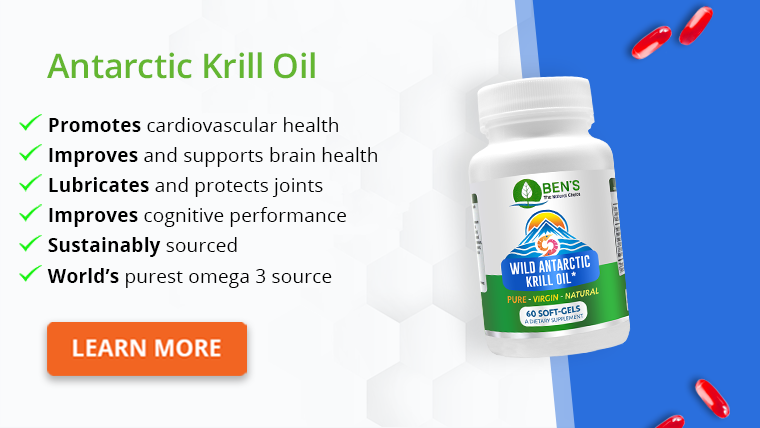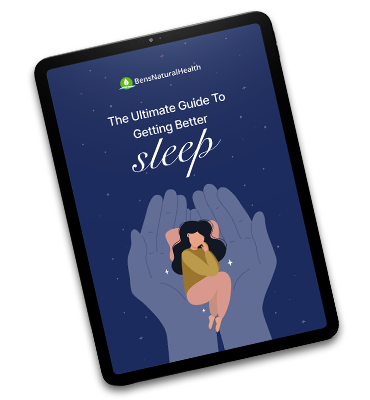- 11 high-potassium foods to avoid while taking spironolactone
- What is leaching?
- 3 low-potassium foods to include in your spironolactone diet
- What else should you avoid while taking spironolactone?
- How much potassium can I eat while taking spironolactone?
- Can I still take my other prescription medications while taking spironolactone?
- Should I take spironolactone with food?
- How do I know if my potassium levels are too high?
- How does Spironolactone work?
- Conclusion
- Source
Spironolactone is a potassium-sparing diuretic used to treat various conditions, such as high blood pressure and heart failure.
Spironolactone is generally safe to use, except in people who have kidney problems or high potassium levels in their blood.
This is because spironolactone is a potassium-sparing diuretic, which means it retains potassium levels in your body while it gets rid of excessive fluids.
High potassium levels in your blood can lead to heart and muscle problems.
If you’ve been prescribed Spironolactone, you may wonder whether you need to make any changes to your diet while taking the medication.
Keep reading to learn what foods to avoid while taking Spironolactone, foods to eat, and more.
11 high-potassium foods to avoid while taking spironolactone
Since spironolactone is a potassium-sparing diuretic, it can help to get rid of excess fluids in your body without reducing potassium levels.
However, other electrolyte levels like sodium, calcium, and magnesium may be affected. A condition called hypochloremic alkalosis may also occur due to chloride depletion.
Some studies also report transient increases in uric acid and glucose levels in your blood.
Generally, you should avoid potassium-rich foods that may cause excessive levels of potassium in your blood, also known as hyperkalemia.
High levels of potassium in your blood can lead to heart and muscle problems, and may even be fatal.
When it comes to healthy, nutritious foods that are packed with vitamins and minerals, several options come to mind. However, if you are on spironolactone, you should be careful about eating these foods.
While there are many foods that can increase potassium levels, here are some with the highest potassium content that you should avoid while taking spironolactone:
1) Potatoes and sweet potatoes
Potatoes and sweet potatoes, especially baked with the skin on, can contain over 1500 mg of potassium per serving.
2) Salmon
One filet of salmon can contain over 1000 mg of potassium. Other potassium-rich fishes include halibut, tuna, cod, and snapper.
You can opt for fish that contain lower levels of potassium, such as canned anchovies.
3) Bananas
A medium-sized banana can contain up to 500 mg of potassium each. Other fresh fruits containing high levels of potassium include cantaloupe, watermelons, grapefruit, tomatoes, avocados, and oranges.

4) Dried fruits such as apricots
As much as they are sweet and delicious, dried apricots can contain as much as 500 mg of potassium per serving.
Other dried fruits that should be avoided while taking spironolactone are raisins, prunes, and dates.
5) Acorn squash
Squash, such as acorn squash, can pack a lot of potassium per serving. One cup of acorn squash can contain around 900 mg of potassium.
6) Leafy greens
Leafy greens such as spinach, Swiss chard, green beet, and Brussel sprouts can contain anywhere from 300 to 900 mg of potassium per cup.
You can opt for other low potassium vegetables such as cabbage, cucumber, and kale to obtain the fiber and other nutrients they contain.
Alternatively, you can try to leach and boil your beets to reduce their potassium levels (more on that later).

7) Legumes
Legumes such as kidney beans, black beans, lima beans, chickpeas, and white beans are chock full of potassium. Kidney beans can contain approximately 450 mg of potassium per serving.
8) Chicken breasts, ground beef, and sirloin steak
One cup of cooked chicken breasts can contain over 300 mg of potassium per cup. Other examples of animal meat with high levels of potassium include pork chops and roast beef. Processed meat, such as luncheon meat and hot dogs, also contain a lot of potassium.
9) Dairy products
Dairy products like skimmed milk and milk-based yogurts can contain more than 350 mg of potassium per cup. The lower the fat content of the milk, the higher the potassium content.

10) Wheat bran and other whole-wheat foods
While they are healthy and usually recommended for blood sugar and cholesterol control, these foods are not recommended for those taking spironolactone because they can contain up to 350 mg of potassium per serving.
11) Coconut water
Nothing says refreshing like fresh coconut water. However, each fruit can contain over 500 mg of potassium.
Other fruit and vegetable juices like carrot juice and spinach juice should also be avoided as they contain a lot of potassium.
Sign Up For Our Newsletter!
- Receive 10% off our best-selling supplements
- Get Your FREE Sleep Guide
- Be the first to hear about sales and promotions
- Stay up to date on our latest health news
What is leaching?
Sometimes, it is hard to stay away from some of your favorite potassium-rich vegetables. You can try to lower their potassium levels through a process called leaching and boiling them.
Leaching is a process of soaking raw or frozen vegetables in water for at least two hours before cooking to leach out some of the potassium out of the food and into the water.
Though this process may reduce some of the level of potassium in them, you should still try to reduce eating these high-potassium vegetables because this process does not completely remove the potassium that is in them.
You can try the following steps to leach and boil your vegetables:
- Peel your vegetables
- Slice them into thin slices
- Rinse them in warm water
- Soak them in warm water for 2 hours – use 10 times more water than the amount of vegetables
- Rinse them again in warm water
- Throw out the water and refill the pot
- Boil them in plenty of water
3 low-potassium foods to include in your spironolactone diet
There are several foods that are recommended for their low-potassium content. You should eat these foods in moderation, otherwise, they can still cumulatively raise your blood potassium levels.
You should also read the nutrition facts label on food packaging to check their potassium content.
Low-potassium food alternatives should contain less than 200 mg potassium per serving on average.
These foods include:
1) White bread, rice or pasta
Foods prepared with white flour such as white bread and pasta, and white rice contain less potassium than whole-wheat foods.
2) Low-potassium fruits
Some examples of low-potassium fruits include apples, pineapples, blackberries, blueberries, strawberries, and raspberries.
3) Low-potassium vegetables
Some examples of vegetables with low levels of potassium include alfalfa sprouts, asparagus, cauliflower, cabbage, carrots, celery, corn and cucumbers.

What else should you avoid while taking spironolactone?
1) Oral potassium supplements
If you are on any oral supplements before, you should check with your doctor or pharmacist if you should continue taking them.
You can refer to the label of any supplements to see if they contain potassium in the form of potassium citrate, potassium phosphate, potassium aspartate, potassium bicarbonate, and potassium gluconate.
2) Salt substitutes containing potassium chloride
Table salt usually contains sodium chloride. However, some people who are on a low-sodium diet may choose salt substitutes like potassium chloride to simulate the saltiness offered by table salt.
You should avoid using potassium chloride as a salt substitute while taking spironolactone.
3) Herbal supplements that act as diuretics
Certain herbal supplements such as dandelion, uva ursi (bearberry), buchu tea, cleavers, horsetail, and gravel root are touted for their diuretic abilities and ability to treat urinary tract infections, high blood pressure and so on.
However, you should consult your healthcare provider before taking these supplements. Not all of their uses are supported by clinical data, and they might also worsen the side effects of spironolactone.
Hence, you should avoid taking these herbal supplements while you are on spironolactone. If you have any doubts about the supplements you are taking, please consult your healthcare provider.
4) Sports drinks
Certain brands of sports drinks like BodyArmor may pack a lot of potassium. You should avoid drinking these sports drinks to avoid excessive potassium levels in your blood.
5) Alcohol
Generally, excessive alcohol intake has been shown to harm the body. Additionally, spironolactone is prescribed to treat medical conditions such as high blood pressure, heart, and liver disease, where alcohol should be avoided.
If you are taking spironolactone for conditions such as hormone-influenced acne breakouts and hair loss, you should stick to the recommended daily alcohol intake.
Moderate alcohol use for healthy adults generally means up to one drink a day for women and up to two drinks a day for men.
How much potassium can I eat while taking spironolactone?
The adequate daily intake of potassium for an average, healthy American adult is around 2600 to 3400 mg.
However, you should adopt a low-potassium diet while taking spironolactone because spironolactone may cause a rise in your blood potassium levels.
Some may advocate for a low-potassium diet while taking spironolactone. A low-potassium diet has a dietary intake of between 2000 to 3000 mg per day.
Nonetheless, it is best to consult your healthcare team on how much potassium you should take, as they would need to consider your underlying health status and concurrent medications to come up with the best plan for you.
If you are prescribed spironolactone, your healthcare provider should monitor your serum potassium levels and kidney function, especially if you are taking a higher dose of the medication.
Can I still take my other prescription medications while taking spironolactone?
Spironolactone may interact with other drugs. You should tell your doctor if you are taking any of these medications:
- Eplerenone, Amiloride, Triamterene or other potassium-sparing diuretics
- Frusemide
- Enoxaparin
- Any angiotensin-converting enzyme (ACE) inhibitors
- Any oral anti-diabetic medications
- Digoxin
- Any non-steroidal anti-inflammatory drugs (NSAIDs)
- Any other over-the-counter medications

Should I take spironolactone with food?
You should take your medication with a meal, especially if it upsets your stomach. Spironolactone may cause dehydration if taken excessively.
Symptoms of dehydration can include dry mouth, excessive thirst, headache and dizziness. While taking spironolactone, you should inform your doctor if you develop any side effects.
How do I know if my potassium levels are too high?
Taking too much spironolactone can cause the potassium levels in your blood to become too high.
Some of the common side effects of spironolactone are increased thirst and urination. However, if you start to get sick or unwell, it could mean that you may have too much potassium in your body.
Here are some signs that you might have too much potassium in your blood:
- Slow or irregular heartbeat or palpitations
- Tingling feeling or feeling numb in your hands, feet, or lips
- Muscle weakness or heaviness of the legs
- Short of breath
- Chest pain
- Nauseated and vomiting
If you develop these symptoms, you should get someone to drive you to the hospital or call for an ambulance immediately.
How does Spironolactone work?
Spironolactone has been approved by the US Food and Drug Administration (FDA) for the treatment of:
- Primary hyperaldosteronism (a condition where the adrenal glands release too much aldosterone)
- Swelling, ascites or edema in conditions such as congestive heart failure, nephrotic syndrome, and liver cirrhosis
- High blood pressure
- Hypokalemia (a condition where you have low levels of potassium in your blood)
Spironolactone is also used off-label to treat androgen-influenced acne breakouts as well as hirsutism (a condition where there is excessive hair growth in women), and hair thinning or hair loss problems in women.
These problems are usually seen in women with polycystic ovary syndrome (PCOS) or androgenetic alopecia.
Spironolactone works by reducing the levels of:
- Aldosterone
- Androgens
By lowering the levels of these two hormones in your body, spironolactone can:
- Help to reduce excessive fluids as seen in those with primary aldosteronism, nephrotic syndrome, high blood pressure and heart failure by excreting more sodium and water, without causing a loss in potassium levels.
- Treat hormone-influenced acne breakouts, hirsutism, and hair loss problems in women with high levels of androgens.
The table below summarizes the use of spironolactone in treating various conditions.
| Problem | Cause | Effect of spironolactone | Outcome |
| Fluid retention Edema Ascites | Heart failure Liver cirrhosis Nephrotic syndrome | Lowers the level of aldosterone in the body | Removes excessive fluid along with sodium while retaining levels of potassium in the body |
| High blood pressure Low potassium levels | Primary aldosteronism Resistant hypertension | ||
| Acne Hirsutism Female-pattern hair loss | Excessive levels of androgen such as in PCOS or androgenetic alopecia | Lowers the level of androgens in the body | Decreases acne, hirsutism, and hair loss in women with PCOS |
Conclusion
Spironolactone is an effective potassium-sparing diuretic that can help with various conditions.
From heart failure to high blood pressure, and even hair loss, spironolactone is a prescription medication and needs to be taken with caution as it can cause too much potassium in your body.
Hence, you should avoid high-potassium foods and supplements if you are taking spironolactone for your medical condition(s).
Always check the nutrition facts label before eating them. If you have any concerns about the side effects of spironolactone, your current medication list, and your diet while taking spironolactone, you should consult your healthcare provider.
If you develop any signs of excessive potassium in your body, such as numbness, chest pain, palpitations, and shortness of breath, please seek medical attention immediately.
Explore More








